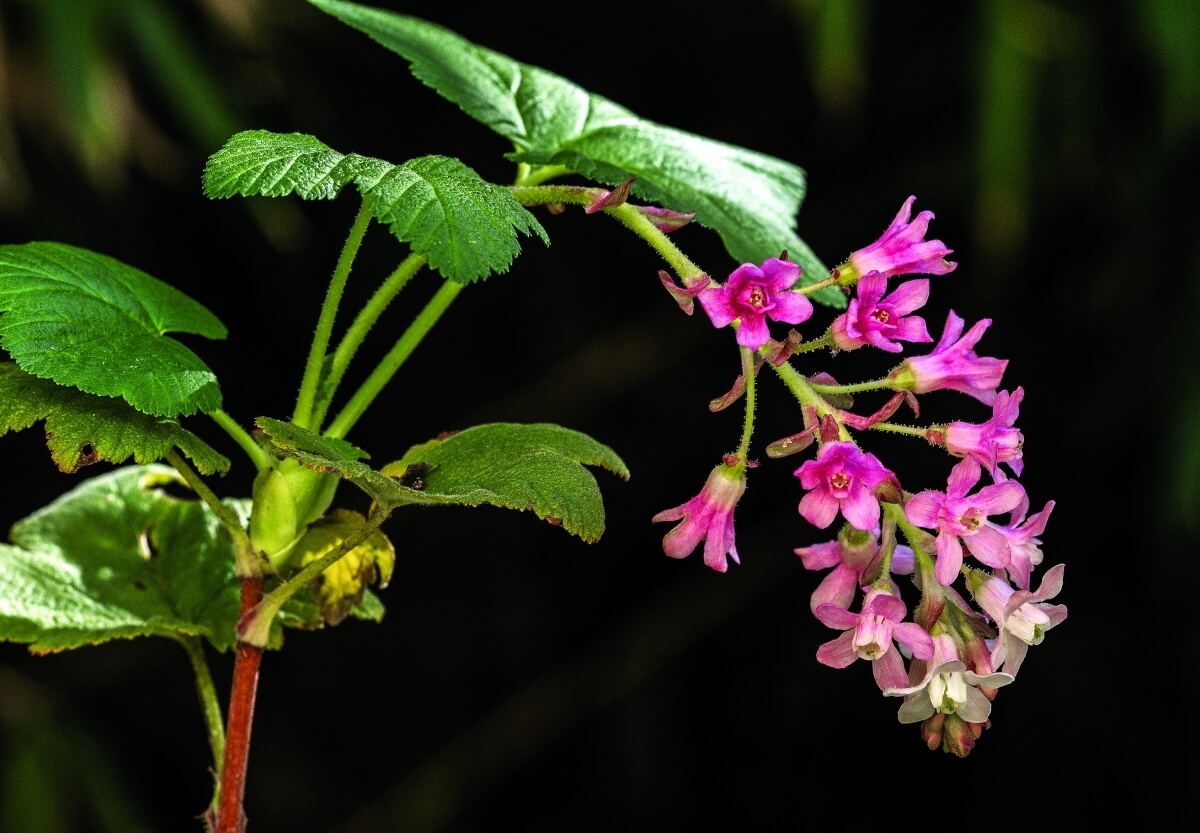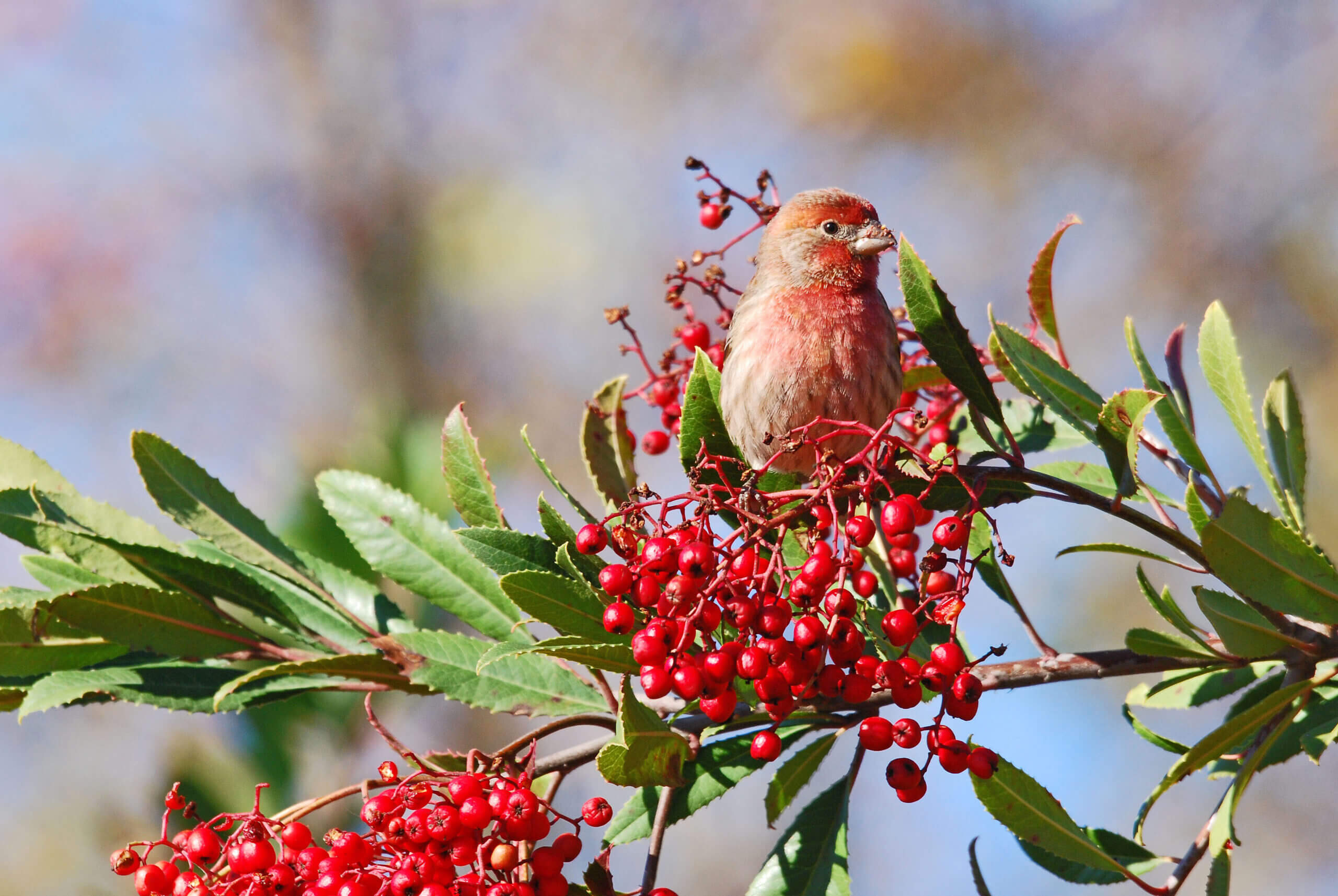Whenever I’m out collecting I always keep it foremost in my mind that seeds are food for all sorts of insects and other invertebrates, for birds, rodents and other mammals, and food for humans!
When I gather toyon berries in December, I take just a handful from each cluster, and go to several different shrubs to collect. I want to make sure there’s still plenty of food for the birds; the red berries are a magnet for cedar waxwings, robins, house finches, band-tailed pigeons and the mockingbirds. By February, there are no more berries on the toyon.
The native peoples also gathered toyon berries, which they cooked on hot rocks until the skins bubbled, then the berries were mashed and eaten. I imagine that the seeds contained within each berry were also mashed and eaten. That’s not the case when a bird eats the berry; only the flesh is digested, leaving the seeds to be expelled with the feces.
This is a common form of “pre-conditioning” for many seeds contained within berries; the seed is now ready to germinate if conditions are good where it happens to land. I notice lots of toyon seedlings all over my garden, very often right next to the birdbath! I leave some of these seedlings if they are in a suitable place for a large shrub to grow on to maturity. The deer will browse toyon, so the seedling and even the mature plant needs some protection.
In the wild, toyon grows in a chaparral community, together with scrub oaks, ceanothus, coffeeberry, and silk-tassel bush. Often the chaparral is so dense and hillsides so steep that the deer can’t get to the plant. In my oak woodland, toyon shrubs will grow with a broad “skirt” of badly nibbled growth, until finally a leader shoots up in the middle where the deer can’t reach it. One toyon in my woodland is a handsome thirty-foot tree!
Seedlings that can’t stay where they germinated are carefully dug up, using my hori-hori knife to gently tease out the whole taproot. In the nursery, we grow these seedlings on in a long, skinny tube style pot (called a d-pot) for about six months, until they’re big enough for a tree pot, which allows room for a nice straight, long root system to develop.
As a plant propagator, I try to duplicate this natural pre-conditioning to get a better germination rate with the seeds. I try to think like nature, but I also do some research to see what other growers do, and then I might try several methods to find out which yields better results.
I separated seed from toyon berries in December, and then stored the clean, dry seed until February. Other propagators recommend a cool water soak for just an hour before sowing the seed; I did this with half my seed. Before I sowed the other half, I soaked them in hot, black coffee, to duplicate the effect of digestive acids. The pots are labeled; it will be interesting to see if there are distinct advantages to one method or the other.

Pink-flowering currant in bloom. Photo: Tom Christensen
Another important source of berries for birdlife are the native currants. These currants are edible though not very sweet; the native peoples harvested the berries and mashed them with dried meats and fats to produce a sort of power bar!
I grow several species of native currants in my garden, and usually propagate the pink-flowering currant (Ribes sanguineum var. glutinosum) from tip cuttings taken in May. Last fall I gathered berries and soaked them to get the seed. While I was cleaning them I noticed that the water they were soaking in had a delightful scent, and mild, sweet taste. Next year I plan to try making a jelly from the berries!
Meanwhile, we’re off to a good start with ribes sanguineum from seed; freshly cleaned seed was sowed on November 23rd, and by early January germination had begun. By the end of January almost all the seeds had germinated, and true leaves were forming on tiny seedlings. We’ll let them grow on a bit, undisturbed, and plan to pot them up by the end of February. In a year’s time, they will have become beautiful gallon-size shrubs.

